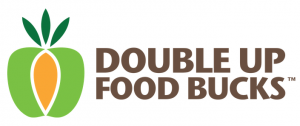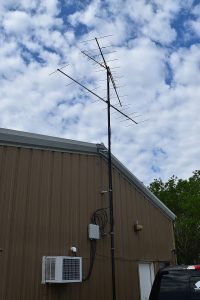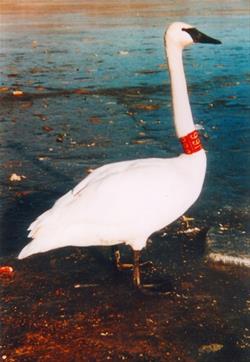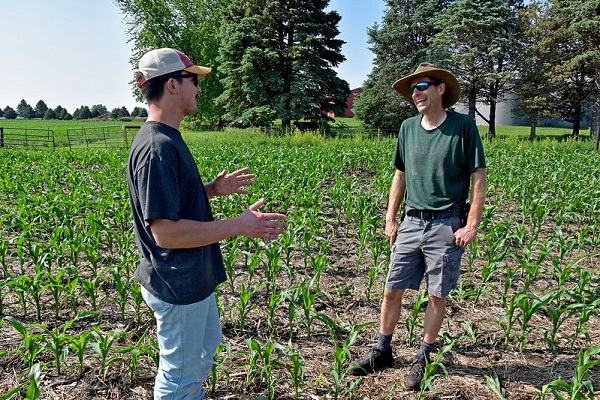CLICK HERE for the latest market quotes from the Iowa Agribusiness Network!
CLICK HERE for the latest market quotes from the Brownfield Ag News Network!
CLICK HERE for the latest market quotes from the Iowa Agribusiness Network!
CLICK HERE for the latest market quotes from the Brownfield Ag News Network!
(Des Moines, Iowa) – The Iowa Healthiest State Initiative’s Double Up Food Bucks program has launched new digital technology to simplify participation for users. The program has transitioned from single-use redeemable paper currency to an online system centered on the new reloadable Double Up Food Bucks Card. The new cards will be usable at all participating Double Up Food Bucks locations.
Double Up Food Bucks is a supplemental SNAP benefit program run by the Iowa Healthiest State Initiative that helps low-income Iowans bring home more fruits and vegetables, while also supporting local farmers. Program participants can double the value of federal SNAP benefits at participating farmers markets, co-ops, and grocery stores including Hy-Vee and Fareway locations around the state when purchasing fresh produce. “As we continue to combat food insecurity in Iowa, it’s important to make sure families have nutritious meals that include fresh produce,” said Elisa Sloss, Senior Vice President, Hy-Vee. “By modernizing the redemption process, the program is easier to use and ensures that those enrolled receive all the benefits they are eligible for.”
 “Fareway is proud to partner with the Iowa Healthiest State Initiative to improve access to fresh fruits and vegetables and enhance the functionality of the DUFB program,” said Jake Moran, Chief Financial Officer of Fareway Stores Inc.
“Fareway is proud to partner with the Iowa Healthiest State Initiative to improve access to fresh fruits and vegetables and enhance the functionality of the DUFB program,” said Jake Moran, Chief Financial Officer of Fareway Stores Inc.
Prior to the release of the new technology, the Double Up Food Bucks program was available through paper currency. The new technology replaces the paper currency with a reusable plastic card. The Double Up Food Bucks card allows SNAP users to spend and save their bucks and removes the risk of losing or destroying paper currency. Users can sign up for a Double Up Food Bucks card at participating sites by shopping for fruits and vegetables with their SNAP/EBT card and asking their cashier about Double Up Food Bucks.
The Double Up Food Bucks Iowa program is made possible by donations from sponsors including the U.S. Department of Agriculture, Alliant Energy, Bank of America, Farmers Mutual Hail, Iowa Total Care, Max & Helen Guernsey Foundation, United Way of Central Iowa, and the Nelson Family Foundation.
To learn more about Double Up Food Bucks and to find participating locations, visit www.DoubleUpIowa.com
(Radio Iowa) – A spokesman for the Iowa DNR says hunters are on pace for a good season harvest as the end of the second deer gun season approaches Sunday. Pete Hildreth talked about the numbers at the Natural Resources Commission meeting today.
“Just under 80,000 deer have been reported through our harvest reporting system,” Hildreth says. The DNR report shows hunters in Clayton County have taken the most deer thus far at 3,390, followed by Allamakee County at 2,589. No other counties have topped 2,000 deer taken, but a few are very close, including Winnesheik 1,943, Jackson, 1,941, Warren 1,814, Madison 1,888, and Dubuque 1,881.
“So based on this year’s harvest, we’re right on track for our typical annual harvest of 100 to 110-thousand deer statewide,” Hildreth says. He says the only downside is three hunting accidents last weekend. “That does serve as a reminder for hunters to review safety measures before heading out. Overall, there have been 12 hunting incidences and again sadly two fatalities across all hunting seasons this fall,” he says.
There were two separate deer hunting incidents that involved shooting at deer that were running between two hunters and one hunter was struck by a wayward shot from another in their party. The other incident involved a self-inflicted injury due to what the DNR calls “carelessly handling a firearm and lack of muzzle control.”
(Radio Iowa) – Iowans are being encouraged to make plans to spend some time on New Year’s Day in the state’s great outdoors by taking part in any of two dozen First Day Hikes, hosted by the Iowa Department of Natural Resources. Sherry Arntzen, chief of the D-N-R’s State Parks, Forests, and Preserves Bureau, says this is the 13th year the state’s offered these free, brisk treks on trails through state parks and forests on January 1st.
“We have nearly 20 state parks that are participating in staff-led or friends group-led hikes,” Arntzen says. “We do have some other parks that have self-guided hike opportunities that you can do at any time on January 1st, so we’re really excited to be able to offer this again.” The rationale is, if folks start off their new year getting out and into nature, being physical, soaking in some sunshine and fresh air, maybe it’ll be the beginning of a healthy habit.
“First Day Hikes are a great way for everybody to get outside, get some exercise, enjoy our wonderful natural resources that we have,” Arntzen says, “and it’s a great way to welcome in the new year with family and maybe even meet a new friend or two.” Some of the hikes will include wildlife viewing opportunities and hot beverages and snacks afterwards. The hikes will average one to two miles, or longer, depending on the location.
“We do have a number of wonderful vistas or scenic views on our trail system,” Arntzen says, “so if we have guided hikes there, they’ll talk a little bit about it. They’ll talk about the resource and of course, it’s always a treat to see the different kinds of wildlife: birds, deer, turkey, that you’ll see when you go on the hikes.”
The hikes on January 1st of 2024 will also mark the start of the 100th anniversary years for two Iowa state parks: Ledges and Pilot Knob. Find details about each hike at the website: www.iowadnr.gov/firstdayhikes
Here’s the list of parks with events:
• Backbone State Park
• Bellevue State Park
• Cedar Rock State Park
• Dolliver Memorial State Park
• Elk Rock State Park
• Gull Point State Park
• Honey Creek State Park
• Lacey-Keosauqua State Park
• Lake Anita State Park
• Lake Darling State Park
• Lake Wapello State Park
• Ledges State Park
• Maquoketa Caves State Park
• Mines of Spain State Recreation Area
• Palisades-Kepler State Park
• Pikes Peak State Park
• Pilot Knob State Park
• Pleasant Creek State Recreation Area
• Prairie Rose State Park
• Shimek State Forest
• Springbrook State Park
• Waubonsie State Park
• Wildcat Den State Park
• Yellow River State Forest
(Radio Iowa) – A couple of donations will allow the Iowa Department of Natural Resources to build out a wildlife tracking system across the state. D-N-R Avian Ecologist, Anna Buckardt Thomas, says the system called Motus is a series of antennae stations and tracking tags that emit a radio signal. “And if they go by a station that’s listening on that same frequency, that station can detect those wildlife. And so we can build a really large scale understanding of movements of these wildlife,” she says.
There are currently 18 stations in Iowa and the 120-thousand dollars in donations will allow them to expand that by 20 stations to create a corridor from east to west across the center of the state. “And then stations bordering the Mississippi and Missouri Rivers. And so that way, we’ll be able to understand bird movement along those major river corridors and that movement as well,” Thomas says. “And then, because we’ll have that fence through the middle of the state, we’re likely to detect pretty much any tagged wildlife that would come to Iowa.”
The tags are put on smaller migratory birds and insects like butterflies and dragonflies. The tags vary in size based on what’s being tagged, and that also dictates how long its battery will last. “For something like an insect, that tag lasts maybe a handful of weeks or a month. And for something like a small bird, it might last six months in a large bird, you might get a tag that can last over a year,” she says.

Motus tower station at the Iowa DNR’s Black Hawk Unit office, near Early. Photo courtesy of the Iowa DNR.
Thomas says different groups tag different species based on what they want to research, and she says there is always some sort of tagging going on. She says the stations all over the western hemisphere and Iowa provide a variety of information that the D-N-R can review. “So if we can learn about particular pathways or particular habitats that are really important for these migratory species, we can help inform our conservation and management of those areas,” Thomas says. The information is also available to the public at the website motus.org.
“And you can explore a map of all the existing stations, you can click on a station and learn about what animals have flown by or moved by and then detected by that station,” she says. “You can look up what species of wildlife are being tagged on the system. You can look up a specific tagging project if you’re aware of it, though. There’s a lot of really cool data to explore.” Thomas says you can also build maps of individual birds or collections of birds to see where they’re being detected as they move during migration periods.
The D-N-R hopes to add the additional sites in the next five years.
(Atlantic, Iowa) – You’re invited to join Cass County Conservation Department Staff at Atlantic’s Schildberg Recreation Area- Lake number 4, on Saturday, January 6, 2024 for “Soiree with the Swans.” Conservation Dept. Staff will be giving ten-minute presentations regarding the Trumpeter Swans every half-hour, beginning at 11-a.m., with the last one presented at 2-p.m.
There will also be time to view the swans through spotting scopes and witness random swan feeding sessions. Hot chocolate, cookies, and other snacks will be provided free of charge with donations being accepted (for swan care).
 The Schildberg Recreation Area is located on the northwest edge of Atlantic, Lake 4 is on the north side of Highway 83. Atlantic is celebrating 24 winters of the Trumpeter Swans wintering here.
The Schildberg Recreation Area is located on the northwest edge of Atlantic, Lake 4 is on the north side of Highway 83. Atlantic is celebrating 24 winters of the Trumpeter Swans wintering here.
This event is not to be missed! IF THE WEATHER IS “BAD” OR THE SWANS ARE NOT AT THE PARK…the program will be at the Atlantic Public Library from 12:00 p.m.-1:00 p.m. with hot chocolate, cookies, and other snacks available. The event is being sponsored by the Cass County Conservation Board, Atlantic Parks and Recreation, and the Iowa Department of Natural Resources.
(Des Moines, Iowa; USDA News) — USDA’s Natural Resources Conservation Service (NRCS) obligated a record $85.8 million in conservation practice funding to Iowa farmers in fiscal year 2023, through 1,628 conservation program contracts that will help treat natural resource concerns such as soil erosion and water quality on 386,736 acres. Conservation program contracts typically run three to five years, depending on the program. The obligated funds are nearly $3 million more than the prior record of $83 million in fiscal year 2021, and $16 million more than the prior five-year average.
IRA Funding
NRCS State Conservationist Jon Hubbert says a major reason for the increase in conservation funding is the Inflation Reduction Act (IRA), which helped NRCS provide $18.6 million to Iowa farmers in 2023. Hubbert says the IRA offers unprecedented funding for several existing programs. “We are using IRA funds to provide direct climate mitigation benefits to Iowa landowners and expanding access to NRCS assistance to increase conservation on Iowa’s private lands,” he said.
IRA funding is targeted to support climate-smart agriculture mitigation and help farmers build resilience in their operations. Examples of eligible practices include cover crops, no-till farming, nutrient management, prescribed grazing, and tree planting. “Many of the conservation efforts Iowa producers are adopting through IRA offer stacked benefits,” said Hubbert. “They are also benefitting soil health, water quality, wildlife habitat and protecting other resource concerns.”
Hubbert says IRA funding will increase over the next few years. “This is a great opportunity for Iowa landowners to address resource concerns on their farms,” he said. “The support for voluntary conservation at the local and national level has never been greater.”

WelchBakehouse – Iowa farmers like Jon Bakehouse (right) of Mills County are utilizing USDA-NRCS conservation programs to diversify their operations while simultaneously protecting and enhancing their natural resources, such as soil health, water quality and wildlife habitat.
Program Breakdown
NRCS provides conservation funding through four primary programs authorized through the Farm Bill: Conservation Stewardship Program (CSP), Environmental Quality Incentives Program (EQIP), Agricultural Conservation Easement Program (ACEP), and Regional Conservation Partnership Program (RCPP).
Conservation Stewardship Program (CSP): CSP helps farmers build a customized plan to meet their conservation goals and needs. Iowa NRCS obligated about $22.2 million through new and renewed CSP contracts during the past year to 557 Iowa landowners who signed five-year CSP contracts to treat natural resource concerns on their land. The CSP contracts will cover 267,103 acres.
Statewide leaders in CSP:
Environmental Quality Incentives Program (EQIP): NRCS contracted about 45 percent of new federal conservation funding in Iowa through EQIP – a voluntary program that promotes agricultural production and environmental quality, where farmers can choose from a conservation practice list developed at the county level to treat local resource issues. Through EQIP, NRCS obligated $39.1 million covering 93,717 acres through 840 contracts. For the second consecutive year, cover crops, brush management, prescribed grazing, and no-till were the most adopted practices by Iowa farmers.
Statewide EQIP highlights:
Regional Conservation Partnership Program (RCPP): Iowa NRCS provided more than $10.5 million to Iowa farmers in 2023 through RCPP projects that will help treat natural resource concerns on more than 24,000 acres. NRCS assisted producers through eight RCPP partnership agreements and 207 contracts. RCPP promotes coordination between NRCS and its partners through agreements and program contracts. The eight RCPP projects in Iowa focus primarily on improving water quality and soil health.
Easements: Through ACEP, NRCS helps landowners, land trusts, and other entities protect, restore, and enhance wetlands, grasslands, and working farms through conservation easements. Overall, there are 1,722 conservation easements in Iowa covering 198,407 acres. During fiscal year 2023, Iowa NRCS obligated $14 million by helping landowners to place agricultural land into 12 new conservation easements. They include:
Iowa NRCS staff also obligated $13.7 million to historically underserved producers through 278 contracts, covering 30,295 acres. Historically underserved producers include beginning farmers, military veterans, limited resource producers, and socially disadvantaged farmers. NRCS staff wrote 12,753 conservation plans during fiscal year 2023, which covers more than one million acres. Conservation plans help producers target and address natural resource concerns such as soil erosion, water quality, and wildlife habitat, in addition to addressing climate change and improving soil health.
For more detailed Iowa NRCS program results and information, go to https://www.nrcs.usda.gov/sites/default/files/2023-11/2023At-A-Glance.pdf.
(Radio Iowa) – Despite drought conditions, a five-acre operation at the Johnson County Historic Poor Farm wrapped up the growing season by reporting record production. Grow Johnson County produces fresh fruits and vegetables, 100-percent of which is donated to 16 local emergency food organizations. Program manager Claire Zabel) says they produced 40-thousand pounds of fresh food this year, the farm’s highest-ever yield.
Zabel says the season’s production increase is due, in part, to increased staffing this year.
Some 83-percent of Iowa is experiencing drought conditions. The U-S Drought Monitor says more than a quarter of the state is in exceptional drought. Historically, that has significantly impacted row crop yields.
(Radio Iowa) – The Iowa State University Farmland value survey shows a record price once again, but the increase is less than last year. I-S-U’s Rabail Chandio oversees the survey, and says the average price for an acre is 11-thousand-835 dollars. “This is a three-point-seven percent (3.7%) increase from last year, and a 424-dollars increase from last year,” she says. The single digit increase comes after two straight years where land values went up by double-digits. “Last year, we saw an increase of 17 percent…, and before that the increase was 29 percent So we’re still seeing an increase, but it’s a lot more modest and has slowed down,” Chandio says. She says the current land value trend appears to be following what happened about ten years ago when land values rose, and then there were minor adjustments without a crash in the market.
“And we’re seeing kind of a similar thing here. Right now we’re seeing we were at a quite a high value during the last couple of years, which is decreasing. And we’re hoping again, that it won’t really crash but we’ll see a soft landing,” Chandio says, “as is happening in the broader economy, we avoided a recession we hope to see kind of same thing happen in the land markets.” Chandio says the slowdown led to one of the nine land districts seeing a drop in overall values for the first time in several years.
“This year the northwest (district) saw a decrease of zero-point-eight percent. All of the other crop reporting districts show and increase in the land values, with the highest being the south-central and the southeast at 12-point-eight percent and nine-point-six percent,” she says. Chandio says it appears the southern district was lagging a little behind the others in their increases, and that could be why they are showing the higher values in this report.
(Radio Iowa) – Leaders of the Iowa Bicycle Coalition are on a road trip this week with the goal of visiting 99 Iowa bike shops, giving a nod to Iowa’s senior U-S senator in calling this a “Full Grassley Tour.” Coalition executive director Luke Hoffman says they’re striving to highlight and support local bike shops and their economic impact while generating interest in cycling, even as winter looms. “The Iowa Bicycle Coalition, being the statewide nonprofit organization around bicycle advocacy and shared safe roadways,” Hoffman says, “we, to that end, want to talk to cycle groups, bike shops, bike-friendly businesses about how we can be building community together.” As part of the tour, Hoffman says they’re meeting with cycling enthusiasts, which includes those who love riding in the cold weather with specially-equipped winter bikes. All of the visits center around local bike dealers and mechanics.
“It’s about doing local bike rides, visiting the bike shops,” he says, “and then talking to those business owners about how they can be part of our advocacy work, as well, in the legislative session.” Hoffman says the coalition is working to promote safe and accessible bicycling in Iowa through education, events, better policy, and growing a community of supporters. He says this week-long tour is part of that vision, to make bicycling in Iowa safe, enjoyable, and accessible for all.
“We’re doing it because we want to start something new and unique and that’s Support Your Local Bike Shop,” Hoffman says. “This time of the year is a time where bike shops typically see a little bit of a dip in business just because it’s not the summer months, it’s not close to RAGBRAI. So we want to show them some love ahead of the holiday season and let people know they can support their local bike shop this time of the year.”
The annual Iowa Bike Expo is scheduled for next month at the Iowa Events Center in Des Moines, one of the Midwest’s largest one-day bike shows. Later that same day, January 27th, will be the RAGBRAI Route Announcement Celebration.